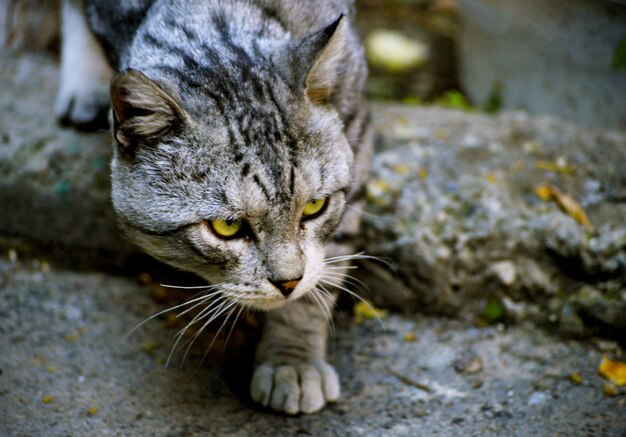Ringtail cats, scientifically known as Bassariscus astutus, are fascinating creatures that often leave people intrigued and curious about their behavior. Native to North America, these small, raccoon-sized mammals have unique characteristics that set them apart from many other animals in the wild. In this article, we will delve into the world of ringtail cats, exploring their physical characteristics, behavior, interactions with humans, and their conservation status.
Introduction
Table of Contents
ToggleWhat is a Ringtail Cat?
Ringtail cats, despite their name, are not feline but belong to the family Procyonidae, which includes raccoons. They earned their name from the distinctive dark rings on their bushy tails, which can serve as a helpful identifier in the wild. They are sometimes colloquially referred to as “miners’ cats” due to their historical association with miners in the American West.
Common Misconceptions
Before delving into the question of whether ringtail cats are dangerous, it’s essential to address common misconceptions. Despite their raccoon-like appearance, they are not closely related to raccoons. Furthermore, their behavior and interactions with humans are distinct.
Physical Characteristics
Size and Appearance
Ringtail cats are small, with a body length of approximately 12-17 inches and a tail of 12-15 inches. They typically weigh between 1.5 to 3 pounds. Their fur is soft, dense, and varies in color, ranging from grayish-brown to pale yellow. Their most distinctive feature is their long, bushy tail, adorned with alternating black and white rings, which can account for up to 80% of their body length.
Adaptations for Survival
These creatures possess several adaptations for survival in their natural habitat. Their sharp, retractable claws help them climb trees with ease, making them exceptional tree-dwellers. Their keen eyesight and hearing make them effective hunters, primarily feeding on insects, small mammals, birds, and fruits.
Behavior and Habitat
Nocturnal Lifestyle
Ringtail cats are primarily nocturnal, meaning they are most active during the night. This behavior aids in avoiding predators and competing for resources. They are solitary animals, except during the breeding season, and use their excellent night vision to hunt for food.
Preferred Environments
These creatures inhabit a variety of environments, including deserts, rocky canyons, and forests. They are known for their agility and can easily traverse rocky terrains and cliffs. Their agility is also put to use when hunting, as they can catch agile prey.
Diet and Hunting Techniques
Ringtail cats have an omnivorous diet, and their menu can vary significantly based on their environment. They primarily feed on small mammals, insects, and birds. They are also known to consume fruits, vegetables, and carrion when the opportunity arises.
Interaction with Humans
Are Ringtail Cats Dangerous to Humans?
The question of whether ringtail cats are dangerous to humans is a complex one. These creatures are typically shy and reclusive, and their primary goal is to avoid human contact. They are not known to be aggressive towards humans unless provoked or cornered. However, their behavior may vary depending on their disposition and past experiences.
Encounters and Observations
People who have had the opportunity to observe ringtail cats in the wild often describe them as curious and agile creatures. They are known to display playful behaviors when interacting with one another and their young.
Keeping Them as Pets
In some areas, people have attempted to keep ringtail cats as pets. This is a controversial practice and, in many places, illegal due to concerns about their suitability as domesticated animals. It’s important to remember that wild animals may not make suitable pets and can pose risks to both the animal and the owner.
- Conservation Status
Threats to Ringtail Cat Populations
Ringtail cats face several threats in the wild, including habitat loss due to urban development, road mortality, and competition with other species. Despite their adaptability, they are vulnerable to these factors.
Conservation Efforts
Efforts to protect and conserve ringtail cat populations involve habitat preservation, raising awareness about their ecological significance, and conducting research to understand their behavior and needs better.
Conclusion
In conclusion, ringtail cats are not inherently dangerous to humans but should be treated with respect and caution in the wild. They are unique and captivating creatures with a vital role in their ecosystems. Efforts to protect their habitats and raise awareness about these animals are crucial for their long-term survival.
Frequently Asked Questions
1. Can you keep a ringtail cat as a pet?
Keeping a ringtail cat as a pet is generally discouraged and, in many places, illegal due to concerns about their suitability as domesticated animals.
2. Are ringtail cats similar to raccoons?
Ringtail cats share some physical similarities with raccoons but are not closely related. They belong to the family Procyonidae, which includes raccoons.
3. Are ringtail cats endangered?
Ringtail cats are not currently classified as endangered, but they do face threats to their populations, primarily due to habitat loss.
4. Do ringtail cats make good hunters?
Yes, ringtail cats are skilled hunters, using their agility and sharp claws to catch small mammals, birds, insects, and other prey.
5. Are there any conservation programs dedicated to ringtail cats?
Yes, there are conservation efforts aimed at protecting ringtail cats, including habitat preservation and research to understand their behavior and needs better.





